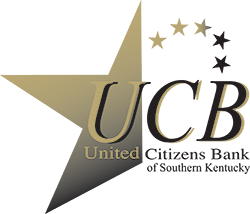Security Statement
This Internet Banking System brings together a combination of industry-approved security technologies to protect data for the bank and for you, our customer. It features password-controlled system entry, a VeriSign-issued Digital ID for the bank’s server with extended validation that will turn the address bar green when connected, Secure Sockets Layer (SSL) protocol for data encryption, and a router loaded with a firewall to regulate the inflow and outflow of server traffic.
Secure Access and Verifying User Authenticity
To begin a session with the bank’s server the user must key in a Log-In ID and a password. Our system, the Internet Banking System, uses a “3 strikes and you’re out” lock-out mechanism to deter users from repeated login attempts. After three unsuccessful login attempts, the system locks the user out, requiring either a designated wait period or a phone call to the bank to verify the password before re-entry into the system. Upon successful login, the Digital ID from VeriSign, the experts in digital identification certificates, authenticates the user’s identity and establishes a secure session with that visitor.
Secure Data Transfer
Once the server session is established, the user and the server are in a secured environment. Because the server has been certified as a 128-bit secure server by VeriSign, data traveling between the user and the server is encrypted with Secure Sockets Layer (SSL) protocol. With SSL, data that travels between the bank and customer is encrypted and can only be decrypted with the public and private key pair. In short, the banks server issues a public key to the end user’s browser and creates a temporary private key. These two keys are the only combination possible for that session. When the session is complete, the keys expire and the entire process starts over when a new end user makes a server session.
Router and Firewall
Requests must filter through a router and firewall before they are permitted to reach the server. A router, a piece of hardware, works in conjunction with the firewall, a piece of software, to block and direct traffic coming to the server. The configuration begins by disallowing ALL traffic and then opens holes only when necessary to process acceptable data requests, such as retrieving web pages or sending customer requests to the bank.
Using the above technologies, your Internet banking transactions are secure.
External Links
United Citizens Bank of Southern Kentucky, Inc. website provides links to other third party websites. Even if the third party is affiliated with the bank through a business partnership or otherwise, United Citizens Bank of Southern Kentucky is not responsible for the privacy policies or practices or the content of such external links. These links are provided to you for convenience purposes only, and you access them at your own risk.
Disclaimer
United Citizens Bank of Southern Kentucky, Inc. assumes no responsibility for accuracy, correctness, or content of the materials provided on this website. You should not assume that the materials on this website are continuously updated or otherwise contain current information. The materials provided at this website are provided “as is” and any warranty (express or implied) condition, or other term of any kind, including without limitation, any warranty of merchantability, fitness for a particular purpose, non-infringement, or title is hereby excluded.
